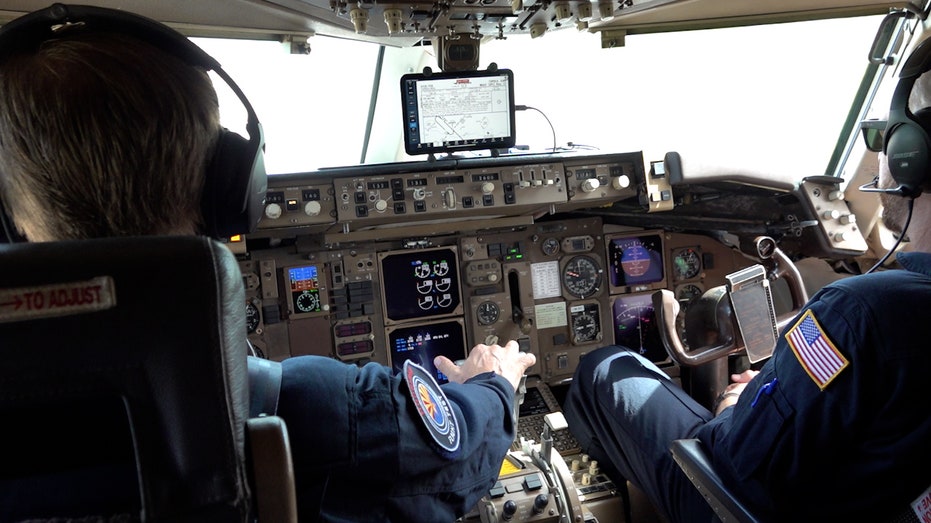Pilots test first-of-its-kind cockpit alert system that detects possible collisions on runways
KANSAS CITY, Mo. Engineers are in the final testing phase of a cockpit alert system they say could prevent close calls on the runway.Honeywell Aerospace's "Surface Alert System," or "SURF-A," can detect when a rogue aircraft gets in the way of another plane that has been cleared for takeoff or landing. The system gives pilots two aural alerts when an unauthorized aircraft enters the runway on a collision course with the authorized aircraft. The first alert sounds 30 seconds before a collision, and the second alert sounds 15 seconds before a collision."It sounds like such a small amount of time, but things happen so rapidly, and 15 to 30 seconds is actually a very, very large margin when you're moving at the speeds that we're moving in an aircraft like this," Honeywell Test Pilot Doug Rybczynski said.The aural call-out includes an automated voice that says, "traffic on runway.""It's a very good, I would say direct, call out," Rybczynski said.TRUMP PICK FOR UN AVIATION OFFICE HAS LONG HISTORY DONATING TO DEMS, NIKKI HALEYThe Honeywell crew flew from the Kansas City Downtown airport in Missouri to Topeka, Kansas. On Test Flight 757's approach to Topeka, a Honeywell crew member parked a smaller Gulfstream aircraft at the end of the runway, triggering the SURF-A alert system. After hearing both alerts, the pilot performed a "go-around" maneuver.The demonstration simulated a 2023 close call at the Austin-Bergstrom International Airport in Austin, Texas. In that scenario, a FedEx B767 was cleared to land in poor conditions. As the FedEx plane got closer, the pilots noticed a Southwest Airlines B737 lined up on the runway below them. The FedEx pilots were able to perform a last-second go-around maneuver to avoid a collision, but Honeywell says the SURF-A system, which wasn't around at the time, would have given the pilots an additional 28 seconds of notice.DUFFY'S DOT ACCUSES BIDEN, BUTTIGIEG OF INFLATING AIR TRAFFIC CONTROLLER PIPELINE: JUICED THE NUMBERSSURF-A relies on Federal Aviation Administration-mandated technology called "Smart X," and it has been around since 2008. It lets pilots know if they are taking off on a taxiway, and if they are coming in for a landing too fast or too high.Honeywell started developing the SURF-A system in 2020 when the aviation industry noticed more close calls happening on runways. Using "ADS-B" Out technology, a GPS system that makes an airplane's position known to other pilots, engineers were able to determine the trajectory of planes that are on a collision course.In 2024, the FAA reported 1,664 runway incursions, which is when an aircraft enters a runway without clearance. Seven of those involved two planes on a collision course.The FAA has reported 657 runway incursions so far in 2025."Shockingly, I think for a lot of passengers, there's not an alert system available today to let you know that you're about ready to run into another aircraft on the runway," Thea Feyereisen, Honeywell Aerospace Distinguished Technical Fellow, said.FAA CANCELS NEWARK AIRPORT GROUND STOP AFTER EQUIPMENT ISSUE AFFECTED RADIO FREQUENCIESThe FAA said the best way to eliminate runway incursions is to improve airport infrastructure by adding edge lights, pavement markers, signage, and by making taxiways less complicated. Since 2021, the FAA has given nearly $12 billion to airports across the country to improve airport infrastructure.However, Feyereisen said pilots are ultimately the last line of defense."Pilots have a shared destiny on the aircraft," Feyereisen said. "The pilot can be doing everything correct, but on a path to disaster."CLICK HERE TO GET THE FOX NEWS APPHoneywell Aerospace is pitching the prototype to major airlines, and hopes to have the system certified by September. Engineers said the system could be added to commercial flights in early 2026.




